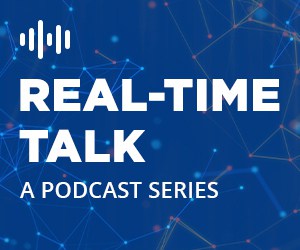
An industrial data historian improves access to data and is a critical component of an organization’s industrial data foundation for advanced analytics and visualization.
Today’s industrial facilities generate massive amounts of data every minute — ranging from automation system data to real-time asset insights about plant machinery, temperatures, sensors, and more. To manage this influx of information, industrial organizations require a dedicated repository capable of capturing all incoming data, no matter its source, level of complexity, or time of arrival.
It’s a tall order, but it’s priority No. 1 for industrial organizations and leadership teams.
For decades, data historians have risen to meet these information challenges, acting as a foundational component and critical connector for organizations working to drive maximum business value from their industrial data. However, as the volume and complexity of this data continues to skyrocket, industrial decision-makers need to remember the importance of data historians to all lines of business — and more effectively determine how the technology lays the groundwork for meaningful improvements across the enterprise.
See also: Three Strategies for Building a Data-Driven Company
Data historians and the rise of Industry 4.0
Data historian technology collects, stores, organizes, and disseminates data originating from various locations across industrial facilities.
Given the diverse range of data sources found in industrial organizations today, data historians must handle structured data (information that includes metadata like timestamps and measurements), unstructured data (such as video and images), master contextual data (such as equipment hierarchies, and location information), 3-D virtual reality data, financial data, maintenance data, and more. Since arriving on the scene in the 1980s, data historians have played an essential role in plant operations. Decades later, forward-thinking industrial companies continue to rely on data historians to manage the constantly expanding volume of data they generate.
In the wake of COVID-19, many manufacturing and industrial organizations also adopted Industry 4.0 technologies and practices — such as IOT, cloud computing, advanced analytics, and automation — to bolster their operations and drive new business opportunities. These tools and processes are particularly helpful to industrial organizations, with 94% of companies indicating Industry 4.0 keeps their organizations’ operations running smoothly.
Since data is the lifeblood of Industry 4.0 solutions, data historians are becoming even more vital to industrial organizations’ data work because they make mission-critical data more flexible and accessible while also preparing facility and asset data for advanced analytics and autonomous processes.
See also: What Is a Data-Informed Organization?
Data historians as drivers of long-term industrial business growth
As your organization contends with ever-increasing amounts of data, it must also prepare for the future — the data you handle now will only grow more complex (and more valuable) going forward. To maintain and expand your facility operations, connect enterprise locations and departments, and forge a foundation for future organizational success, invest in a modern industrial data historian.
Consider several ways a data historian can benefit your business — and the capabilities to evaluate when comparing data historian technologies:
1) Enterprise-wide integration
Your organization accumulates progressively larger amounts of data as it matures, and that data requires a foundation. As a key component of your organization’s industrial data foundation, the right industrialdata historian has a master data feature that contextualizes information from across your organization to help decision-makers understand trends and surface insights that drive value.
Many industrial organizations leverage a hybrid data storage approach, connecting cloud and on-premises data sources. When evaluating data historians, consider how the historian can bridge gaps between these storage options. Leading data historians are effective in both cloud and on-premises environments (e.g., plants in multiple locations) and offer cloud-optimized deployment options. These deployment options allow you to manage your data in multi-cloud environments and make it easier to scale between platforms and meet specific needs across departments — working with data proliferation rather than against it.
An industrial data historian should also connect with your specialized, legacy machinery. This capability enables both continued usage of legacy assets and existing data, incorporating long-standing technologies into your emerging Industry 4.0 strategies and data management initiatives. Connectivity between new and old investments saves your business money and headaches by managing all inputs in a central place.
Together, these data-driven benefits enable your organization to leverage all its industrial data — and the insights it provides — as a foundation for solving significant challenges, like scaling operations and making plants more sustainable.
2) Streamlined data access
Without data historians, data is often left siloed and inaccessible. For example, off-premises storage options are known to experience latency issues.
When encountered even infrequently, latency hurdles spawn major access issues, with employees enduring long wait times to access data. Under ideal conditions, the average latency time your employees experience should be one-tenth of a second to 10 minutes at most. Designed to operate in hybrid environments, data historians keep data retrieval times within this range and help your employees avoid hours-long delays — saving time, money, and frustrations.
Additionally, data historians equip employees working in a variety of roles and environments with easy access to the information they need.
Historically, among the employees working at an industrial company, it was those in the field or on-site who most often benefited from easy, reliable access to data. But in recent years, office workers, data analysts, data scientists, and C-suite executives (and really any employee working remotely or from home) have started accessing plant data more frequently and for a greater range of needs. Since data historians improve overall enterprise connectivity, they enable all employees –– on-site, in the office, and elsewhere (whether by desktop, mobile, or another device) –– to easily access facility data and work more efficiently. Remote access to data is key for organizations interested in scaling operations.
3) Advanced analytics and visualizations
Advanced analytics and autonomous processes have quickly become must-have capabilities for industrial organizations. But these advanced tools are only as good as the data your organization provides them.
Since data historians reside in both cloud and on-premises environments, they can quickly feed an enormous amount of diverse, high-quality data to innovative technologies across the organization. Many AI and advanced analytics tools are also cloud-based, which makes them easy to layer into your data historians. This open-interface web of intelligent resources helps your employees make sense of data and enables them to make smarter, faster business decisions.
Data historians also improve your organization’s data visualization capabilities. Due to the sheer amount of data these solutions collect, they can provide your organization with enough inputs for intricate and granular visualizations. Deeper visualizations offer your employees a better understanding of plant operations within the window required to identify areas of opportunity and weakness — and to take action. To make this work as easy as possible, modern data historians offer intuitive interfaces that are accessible to both advanced and non-technical users.
Data management: The X-factor for industrial businesses
No matter your size or operational complexity, making sense of data is a priority for industrial businesses across all industries, especially as you incorporate Industry 4.0 tools and practices.
An industrial data historian improves access to data, actively connects your enterprise, and is a critical component of your organization’s industrial data foundation for advanced analytics and visualization capabilities –– long-term competencies that are quickly becoming table stakes for leading industrial organizations. In the years ahead, the most successful industrial organizations will be the ones that can manage technologies and practices to make data-driven decisions faster and more effectively than their competitors.
Is your organization ready to lead the way?






























